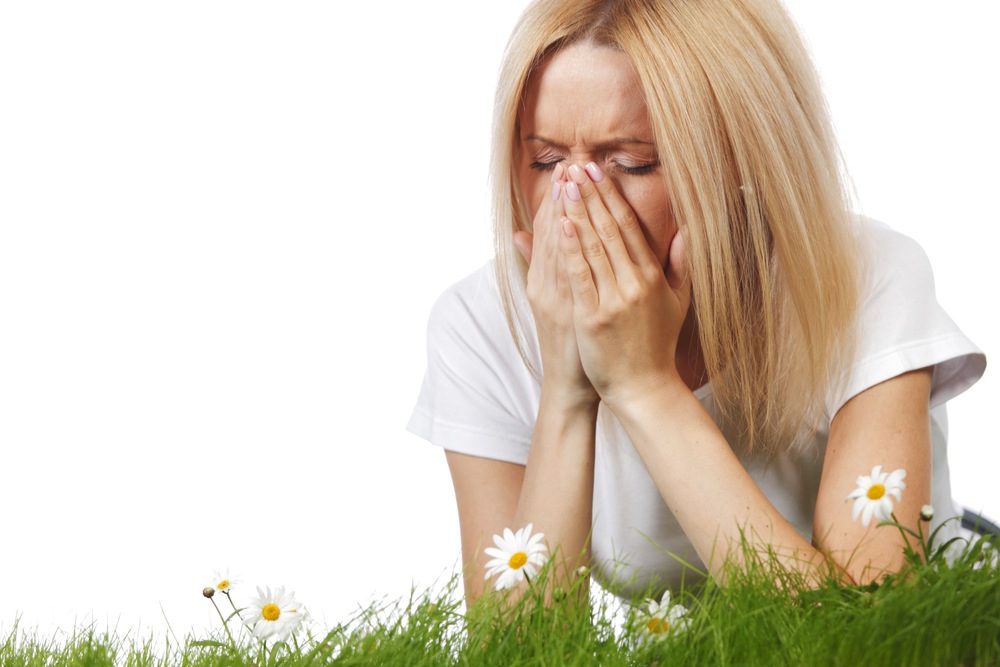
How to Cope with Allergies & Asthma in 2017

In 2017, Live Science is bringing our readers a monthly series on personal health goals, with tips and tricks we've gathered from the many health experts we've interviewed. Each month, we'll focus on a different goal, and the goal for April is coping with allergies. Follow us on Facebook and Twitter to connect with other readers who are working toward these goals.
Jump to: January — Lose Weight | February — Eat Healthy | March — Start Exercising | April — Cope with Allergies | May — Protect Yourself from Sun and Heat
Soon, the days will be getting warmer, shoots of green grass will appear and trees will be bursting with colorful blossoms. But for some people, the arrival of spring also brings symptoms of seasonal allergies — sneezing, wheezing, watery eyes and a running nose — which can make this a miserable time of year. However, there are several steps you can take to get your allergies under control in 2017.
Here's your guide to coping with with allergies and asthma this year.
Allergies: The basics

An allergy is a reaction of your immune system to what are usually harmless, run-of-the-mill substances, such as pollen, cat hair or peanuts. When you're exposed to your allergy trigger (called an allergen), your immune system produces proteins called immunoglobulin E (IgE) antibodies. These antibodies then put out signals that cause the release of other chemicals, such as histamine, which in turn cause your allergy symptoms.
According to the American College of Allergy, Asthma and Immunology (ACAAI), more than 50 million people in the U.S. experience allergies each year.
Allergies are also often tied to asthma, a condition in which people's airways become inflamed and narrowed, which can lead to coughing, chest tightness, wheezing and difficulty breathing. In some people, the same substances that trigger allergies can also trigger symptoms of asthma, according to the Mayo Clinic.
Sign up for the Live Science daily newsletter now
Get the world’s most fascinating discoveries delivered straight to your inbox.
Read up on some allergy basics below:
- The 5 Most Common Allergies
- Sniffle Detective: 5 Ways to Tell Colds from Allergies
- 7 Allergy Myths (and the Truth Behind Them)
- Got Allergies? Blame Neanderthals
- 8 Strange Signs You're Having an Allergic Reaction
- Can You Outgrow Your Allergies?
All about allergy season

There is no single "allergy season." People's allergy symptoms may vary throughout the year, depending on where they live and the types of substances they're allergic to. And some people may have symptoms year round.
Still, many people experience a worsening of their allergies around springtime, when more plants produce pollen. This includes people with allergic rhinitis, or hay fever. Springtime allergies can start as early as February and last until summer, according to the ACAAI. And people who are allergic to ragweed often experience symptoms in the fall, as this plant blooms from August to November, the ACAAI said. People who are allergic to dust mites, pet hair or mold may have symptoms at any time of year.
Here's a look at how the seasons, and the weather, can affect your allergies.
- Why Do People Get Sick When the Seasons Change?
- Why Do Allergies Get Worse in Autumn?
- 7 Strategies for Outdoor Lovers with Seasonal Allergies
- 'Pollen Vortex'? Long Winter Worsens Allergies in Spring
- Climate Change May Worsen Mold Allergies
- What Is 'Thunderstorm Asthma'?
The lowdown on allergy testing
Before you can tackle treating your allergies, it helps to first know what you're allergic to. That's where allergy testing comes in. There are several types of allergy tests, including skin tests, food "challenge" tests and blood tests.

More information on allergy testing:
- Many Parents Who Think They Have Food Allergies Actually Don't
- Children with Asthma May Have Peanut Allergies
- Why Adults Diagnosed with Asthma May Not Actually Have It
Reduce exposure to allergy triggers

Once you know what you're allergic to, you can take steps to reduce exposure to your allergy triggers.
For instance, if you're allergic to pollen, you might try to stay inside on dry and windy days, the Mayo Clinic said. On days when pollen counts are high, you should avoid outdoor activity, particularly in the mornings, when pollen counts are highest, the Mayo Clinic said.
You can also consider using a portable high-efficiency particulate air (HEPA) filter in your home to reduce indoor levels of pollen, pet hair, dust and other substances that you may be allergic to, the Mayo Clinic said.
More information on reducing allergy triggers:
- Tips to Nip Allergies in the Bud
- Allergy Relief Really Is Possible
- Oral Allergy Syndrome: 6 Ways to Avoid an Itchy, Tingling Mouth
Finding the right allergy meds for you
To reduce symptoms of allergies, you can choose from a number of treatments, including pills, nasal sprays, eye drops and allergy shots. The kind of medication you take will depend on your symptoms and the severity of your allergies. You can consult with your doctor about which medication is right for you. Below, we've summarized the various types of allergy medications and the symptoms they treat.

More information on allergy medications:
- Allergy Medications: Which Drugs Treat Which Symptoms
- Most Allergy Sufferers Not Getting Relief from Over-the-Counter Meds
- Allergy Meds Can Pose Driving Hazard, FDA Says
- Why Do Antihistamines Make You Drowsy?
Original article on Live Science.

Rachael is a Live Science contributor, and was a former channel editor and senior writer for Live Science between 2010 and 2022. She has a master's degree in journalism from New York University's Science, Health and Environmental Reporting Program. She also holds a B.S. in molecular biology and an M.S. in biology from the University of California, San Diego. Her work has appeared in Scienceline, The Washington Post and Scientific American.










